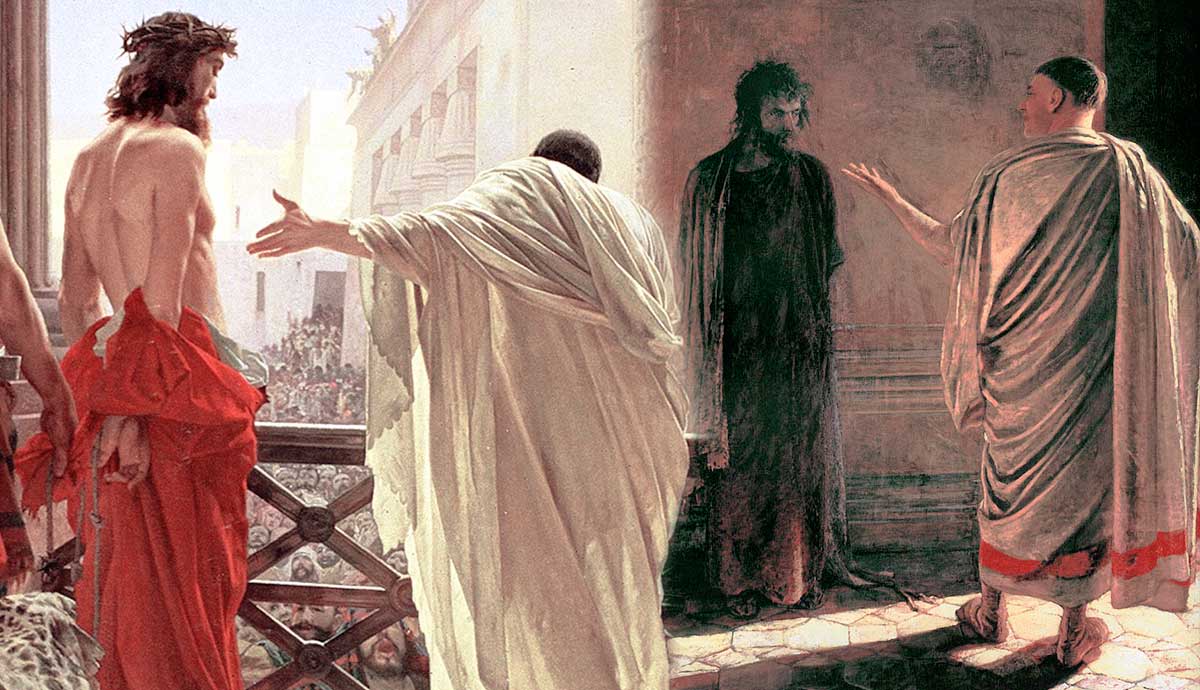
Magical realism is most commonly associated with authors of the so-called Latin American Boom of the 1960s and 70s. However, the term is now widely applied to works by authors from all over the world – and to writers whose work predates the Latin American Boom yet anticipates the preoccupations and irreverent playfulness of magical realism. Here, we will look at just five key authors whose works have profoundly shaped what we understand magical realism to be and what it can achieve.
1. Jorge Luis Borges

Born in Buenos Aires on August 24th, 1899, Jorge Francisco Isidoro Luis Borges Acevedo would go on to become one of Argentina’s most celebrated essayists, poets, translators, and short story writers. Blending philosophy with mythology and elements of the fantastical, he pioneered a surrealist yet cerebral style that informed many of his magical realist successors’ works.
Angel Flores claims that Borges was the original magical realist writer, while the South African writer J. M. Coetzee credited Borges, “more than anyone,” with “renovat[ing] the language of fiction and thus open[ing] the way to a remarkable generation of Spanish-American novelists.”
In 1938, Borges’s father died, and later that same year, he himself sustained a severe head injury, during the treatment of which he contracted a near-fatal case of sepsis. It was during his convalescence that he allowed himself the freedom to explore a new writing style – the style that would make his name as a writer. In 1941, he published his first collection of short stories, El jardín de senderos que se bifurcan (The Garden of Forking Paths), which was later included in Ficciones (Fictions). In the collection’s titular short story, he pioneered the hypertext narrative and, by introducing real historical events from the First World War into the story in (at times) quite a granular level of detail, he created a narrative in which reality is stranger than fiction.
2. Mikhail Bulgakov

Born in Kyiv, Ukraine (then part of the Russian Empire and later part of the Soviet Union) on May 15th, 1891, Mikhail Bulgakov was a writer and medical doctor best known during his own lifetime for his dramatic works. Today, however, he is best known for his novel The Master and Margarita, which he began writing in 1928 but was still unpublished by the time of his death in 1940 and was only published in a heavily censored edition between 1966 and 1967 thanks to the efforts of his widow, Elena Shilovskaya.
The reason for this was that The Master and Margarita is an allegorical indictment of the Soviet Union, including its state-sanctioned literary establishment. The novel begins when the devil (Professor Woland) pays a visit to Moscow in the 1930s and joins in with a conversation between a poet and a critic (both of whom are members of the Soviet literary elite) on how best to deny the existence of Jesus Christ, as was in compliance with the Soviet Union’s official atheism. Following the staging of a show by Woland at the Variety Theater in Moscow, he leaves the city in disarray with its vices on full display and law and order abandoned.
Intertwined with this storyline, however, is Bulgakov’s own retelling of the New Testament, which is set in Jerusalem under Pontius Pilate. Through this intertwined narrative (later revealed to have been written by the eponymous Master), Bulgakov explores Pilate’s complicity in the crucifixion of Jesus Christ and his own conflicting spiritual appreciation of and need for Christ. Thus Bulgakov explores the phenomenon of cognitive dissonance and the corruption at the heart of Soviet society while resisting the aesthetic tenets of Socialist Realism.
3. Gabriel García Márquez

One of the Spanish-American novelists to whom Coetzee refers in his aforementioned praise of Borges was Gabriel García Márquez, another leading figure in what came to be known as the Latin American Boom. Perhaps more so than any other writer – including even Borges, arguably – he is most closely associated with magical realism.
Just as the term magical realist is in itself an oxymoron, this literary style requires writers to hold in tension between the magical and the realist. Though this is no mean feat, García Márquez is a master at balancing these two contradictory stylistic impulses and infusing seemingly realist narratives with an underlying sense of magic and endless possibility.

This is perhaps best evidenced in his seminal 1967 novel One Hundred Years of Solitude, in which García Márquez tells the story of the Buendía family, whose founding patriarch establishes the fictional town of Macondo. Against the backdrop of this fictional setting, strange and supernatural events play out even in the most mundane of circumstances, such as when Remedios the Beauty leaves this world behind and ascends to heaven – all while performing domestic duties.
In his later novel, Love in the Time of Cholera (1985), García Márquez takes a new approach to infusing the reality he constructs with a sense of magic and wonder. Though spurned by Fermina Daza, Florentino Ariza loves her steadily over fifty-one years, nine months, and four days. Upon first falling in love with her, he is sent by his mother to the doctor, who mistakes his lovelorn state for symptoms of cholera. Here, the romantic (and rather fantastical) notion of lovesickness meets resistance when confronted with the hard science of medical opinion, and this tension sets the tone for the rest of the novel.
4. Salman Rushdie

The only living writer on this list, Ahmed Salman Rushdie was born on June 19th, 1947 in Bombay, India, under the British Raj, to a Kashmiri Muslim family. Less than two months later, the Republic of India gained independence from British colonial rule, and the country was partitioned. Though Rushdie’s family were Muslims, he has described his upbringing as only “notionally Muslim,” and he was educated in England at Rugby School in Rugby, Warwickshire, before taking a Bachelor of Arts degree in history from King’s College, Cambridge.
His second novel, Midnight’s Children (1981), catapulted him to literary stardom, winning that year’s Booker Prize. In it, he offers an allegorical retelling of twentieth-century Indian history, beginning in 1947. Saleem Sinai, the novel’s protagonist, is born in the hour when India officially gained independence and, like the other so-called midnight’s children, has magical powers. Through telepathy, he convenes meetings with these other midnight’s children, whose lives are inextricably linked with the fate of their country.

If Midnight’s Children catapulted Rushdie to literary stardom, his 1988 novel The Satanic Verses sparked controversy and debate. Accused of being blasphemous in its depiction of the Prophet Muhammad (referred to as Mahound throughout the novel) and anti-Islamic, the novel was banned in thirteen countries (including Rushdie’s native India), and a fatwā ordering the author’s execution was put on Rushdie by Ayatollah Khomeini, the then Supreme leader of Iran. Bookshops were firebombed, and Rushdie went into hiding for approximately ten years. The novel’s Japanese translator was fatally stabbed, the Italian translator and Norwegian publisher were seriously injured, and Rushdie himself was stabbed multiple times in 2022.
5. Toni Morrison

The internationally acclaimed author Toni Morrison was born Chloe Ardelia Wofford to a Black, working-class family in Lorain, Ohio, on February 18th, 1931. After becoming a Catholic at the age of twelve, she adopted the baptismal name Anthony; hence her nickname – and pen name – Toni.
Morrison published her first novel, The Bluest Eye, in 1970 to critical acclaim, though it initially did not sell particularly well. With her subsequent two novels, Sula (1973) and Song of Solomon (1977), she began to win literary prizes, including the National Book Critics Circle Award for the latter novel. In Song of Solomon, Morrison tells the life story of Macon “Milkman” Dead III, a Black man living in segregated Michigan, drawing on elements of magical realist style to explore the life of a Black man in postbellum America.
In her 1987 novel Beloved, Morrison would further explore how past traumas continue to haunt the present through the psychological toll of slavery. Drawing on the life of Margaret Garner, Beloved tells the story of Sethe, a formerly enslaved woman living in a haunted house in Cincinnati. When the ghost is driven from the house, however, a young woman named Beloved shows up. By including the character of Beloved within an otherwise realistic narrative, Morrison gives voice to the persistence of race-based trauma within the lives of her characters.
The canon of great magical realist writers is extensive and, as the style shows no signs of waning in popularity, ever-expanding. While this list cannot, therefore, claim to be exhaustive by any means, the five magical realist writers collated here have all made innovative and exciting contributions to the stylistic tradition of magical realist literature. Their work is a testament to the diversity and vitality of magical realism.
FAQs
Are there any criticisms of magical realism as a literary genre?
Magical realism, as a literary genre, is sometimes criticized for blurring the line too much between reality and fantasy, which can lead to confusion or a sense of implausibility. Critics argue that this blending can undermine the narrative’s believability or distract from the story’s deeper themes and messages.
How can readers identify magical realism in literature?
Readers can identify magical realism in literature through the seamless integration of supernatural elements into a realistic setting, where the extraordinary is presented as ordinary. The narrative often focuses on the characters’ internal experiences and perceptions, challenging the conventional boundaries between reality and fantasy.
Who are some other famous Magical Realists in literature?
Some other famous magical realists beyond the ones mentioned in this article include Isabel Allende, known for her novel “The House of the Spirits,” and Haruki Murakami, whose works often blend the mundane with the surreal. Laura Esquivel, with her novel “Like Water for Chocolate,” and Alice Hoffman, particularly for “Practical Magic,” also contribute significantly to the genre. These authors exemplify the genre’s characteristic blend of the real with the magical, each bringing their unique cultural and thematic perspectives










